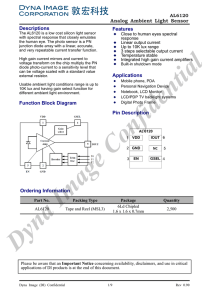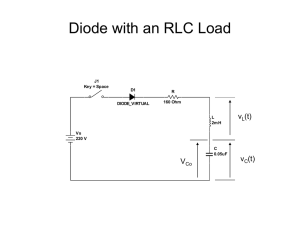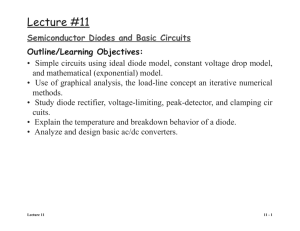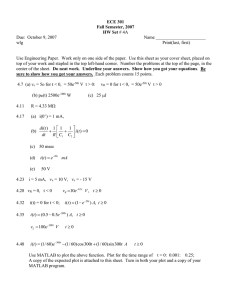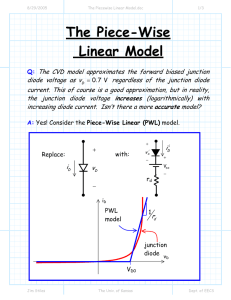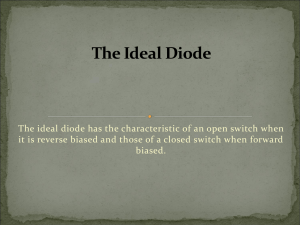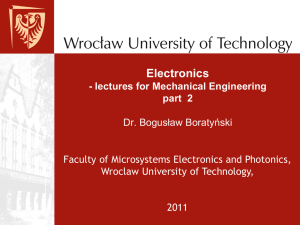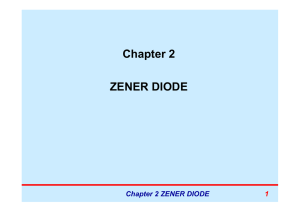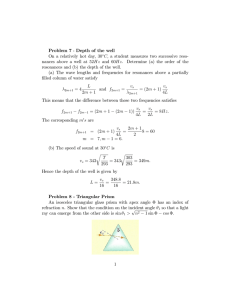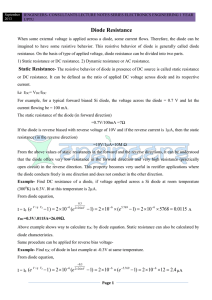Document 13545642
advertisement
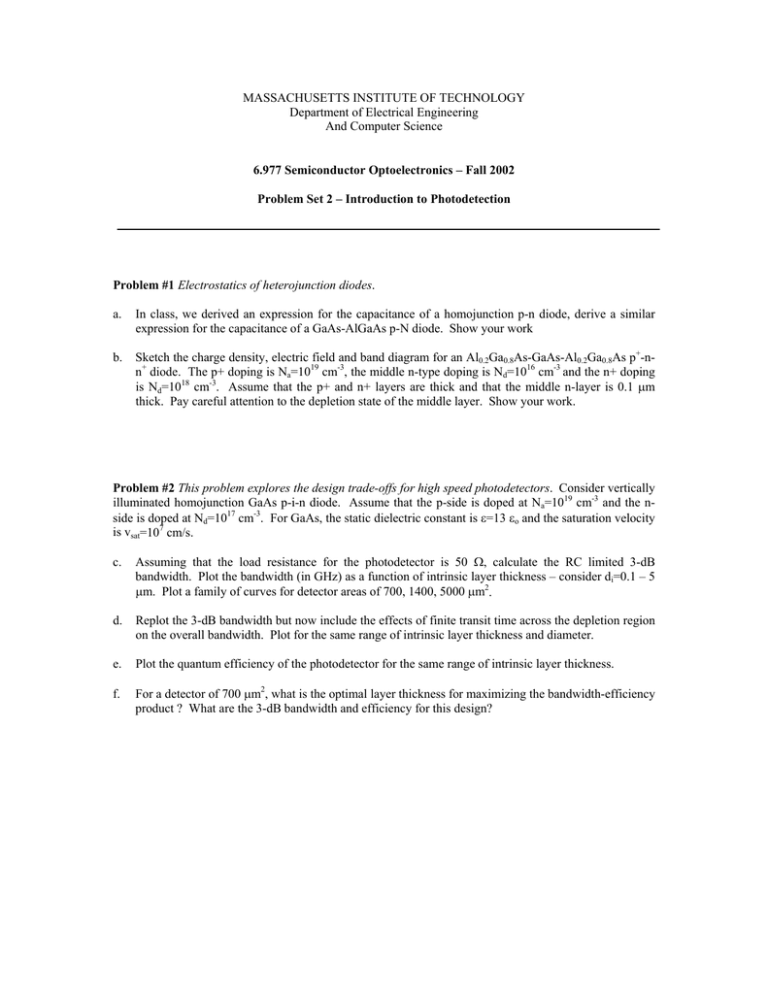
MASSACHUSETTS INSTITUTE OF TECHNOLOGY Department of Electrical Engineering And Computer Science 6.977 Semiconductor Optoelectronics – Fall 2002 Problem Set 2 – Introduction to Photodetection Problem #1 Electrostatics of heterojunction diodes. a. In class, we derived an expression for the capacitance of a homojunction p-n diode, derive a similar expression for the capacitance of a GaAs-AlGaAs p-N diode. Show your work b. Sketch the charge density, electric field and band diagram for an Al0.2Ga0.8As-GaAs-Al0.2Ga0.8As p+-nn+ diode. The p+ doping is Na=1019 cm-3, the middle n-type doping is Nd=1016 cm-3 and the n+ doping is Nd=1018 cm-3. Assume that the p+ and n+ layers are thick and that the middle n-layer is 0.1 µm thick. Pay careful attention to the depletion state of the middle layer. Show your work. Problem #2 This problem explores the design trade-offs for high speed photodetectors. Consider vertically illuminated homojunction GaAs p-i-n diode. Assume that the p-side is doped at Na=1019 cm-3 and the nside is doped at Nd=1017 cm-3. For GaAs, the static dielectric constant is ε=13 εo and the saturation velocity is vsat=107 cm/s. c. Assuming that the load resistance for the photodetector is 50 Ω, calculate the RC limited 3-dB bandwidth. Plot the bandwidth (in GHz) as a function of intrinsic layer thickness – consider di=0.1 – 5 µm. Plot a family of curves for detector areas of 700, 1400, 5000 µm2. d. Replot the 3-dB bandwidth but now include the effects of finite transit time across the depletion region on the overall bandwidth. Plot for the same range of intrinsic layer thickness and diameter. e. Plot the quantum efficiency of the photodetector for the same range of intrinsic layer thickness. f. For a detector of 700 µm2, what is the optimal layer thickness for maximizing the bandwidth-efficiency product ? What are the 3-dB bandwidth and efficiency for this design? Problem #3 This problem explores photovoltaic devices (solar cells). Consider an Al0.2Ga0.8As-GaAs- Al0.2Ga0.8As p-i-n heterojunction diode. Assume that the p-side is doped at Assume that light Na=1019 cm-3 and the n-side is doped at Nd=1017 cm-3. at 1.5 eV is incident on the diode. The p-type is 1µm thick, the intrinsic GaAs is 0.2 µm thick and the n-type is 1 µm thick. The light is incident on the n-side. Unless otherwise stated assume the device is at 300K. Use SimWindows to answer the following questions. a. For 200 mW/cm2 of incident light intensity, how much light is absorbed in the solar cell per unit area? Note: the optical power can be plotted using ‘Plot selected parameter’ and plotting the ‘Total Incident Poynting’ Vector. b. Plot the I-V characteristics for this diode with and without illumination. Notice that under illumination, there is a reverse current that flows when the voltage across the diode is positive. In this region the diode is generating electrical power. What is the peak power generated ? What is the efficiency of converting the absorbed optical power into electrical power ? What is the efficiency of converting the incident optical power into electrical power ? c. The total power generated by a solar cell increases as the light intensity grows (for example on a very sunny day). Unfortunately, not all the incident light turns into electricity, some turns into heat. For higher incident optical intensity there is more heating for the cell. Determine the maximum conversion efficiency for the absorbed optical power for T=300, 320 and 360 K. d. Explain the dependence of the power conversion efficiency on temperature. What could improve the performance ? What is the implication on the design of solar arrays ? Specifically, what are the relative merits of using large areas of p-n diodes versus using a low-cost light concentrator and small areas of p-n diodes.
